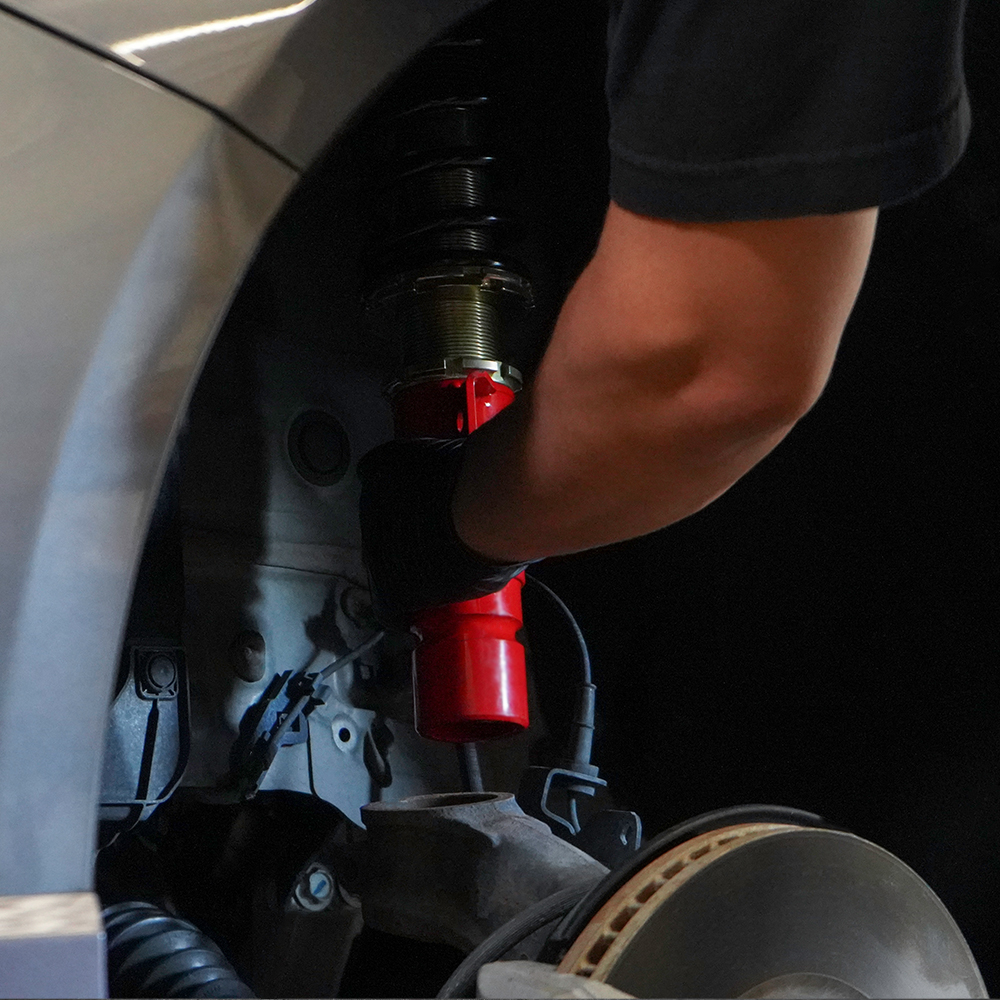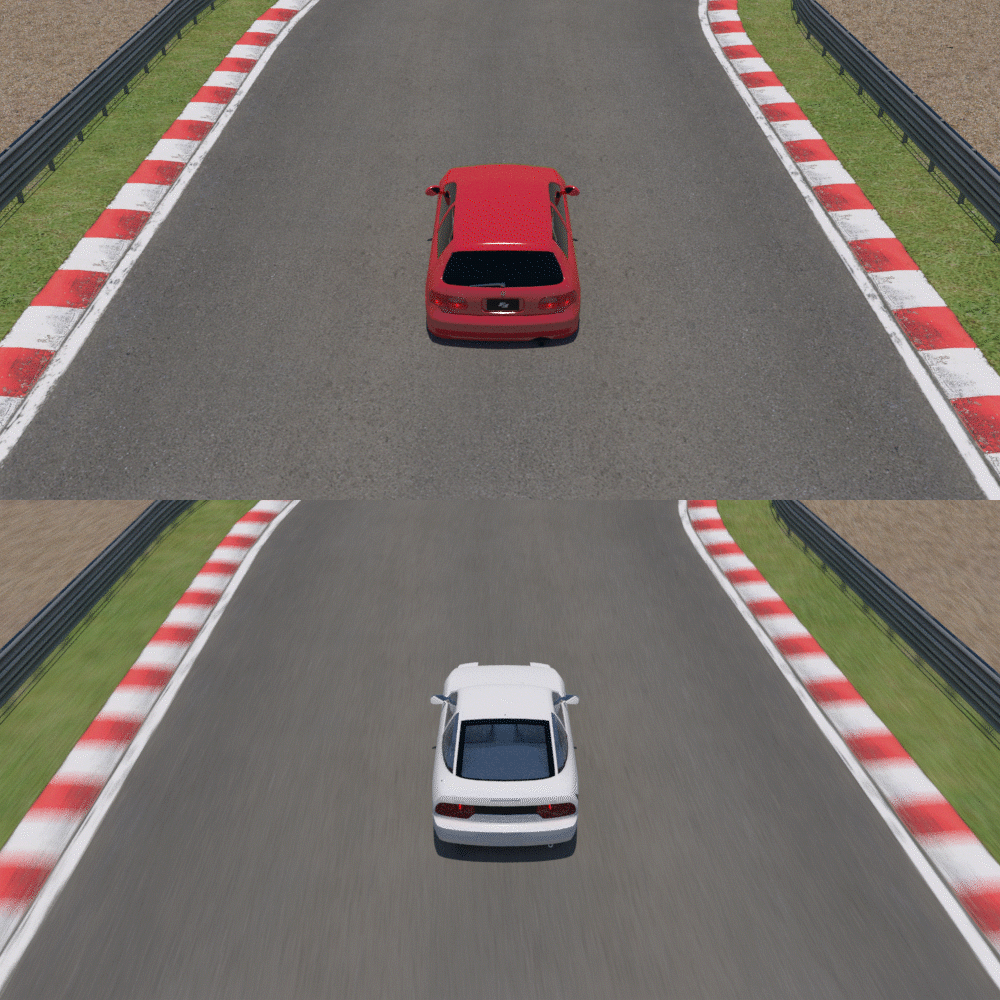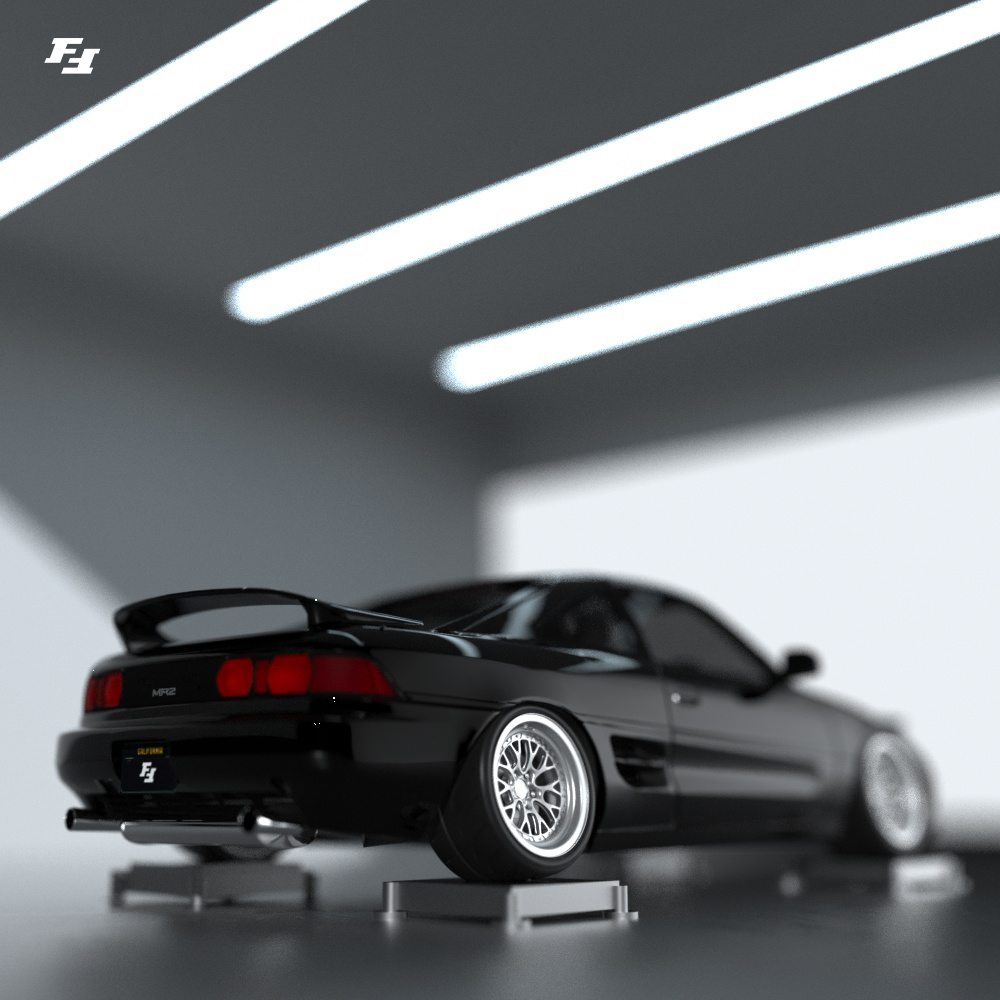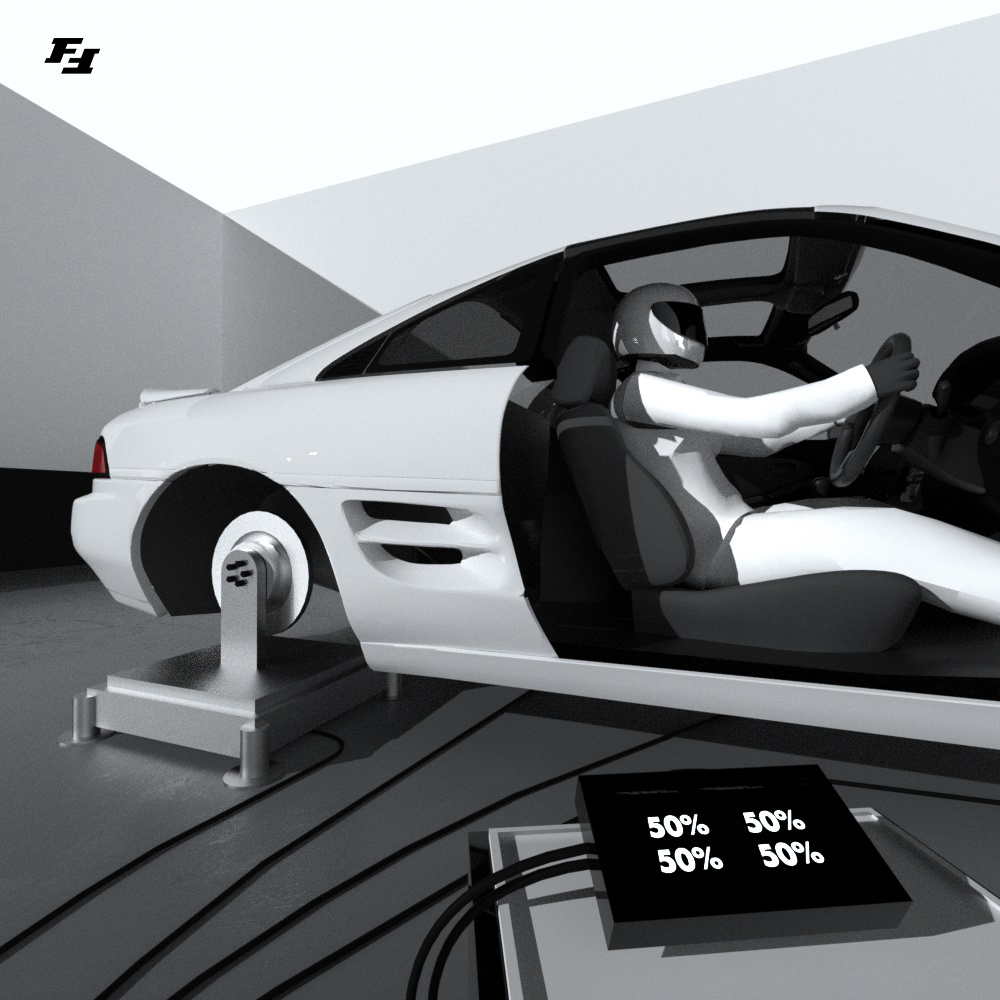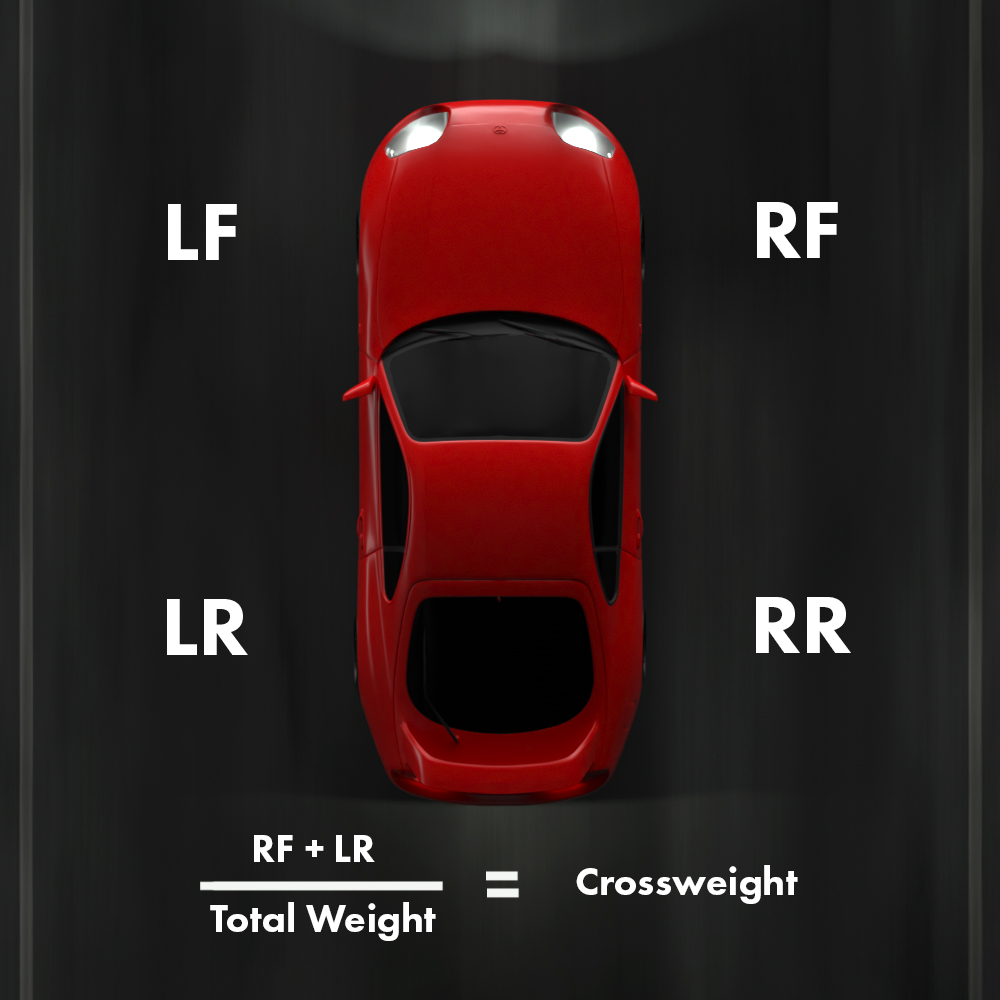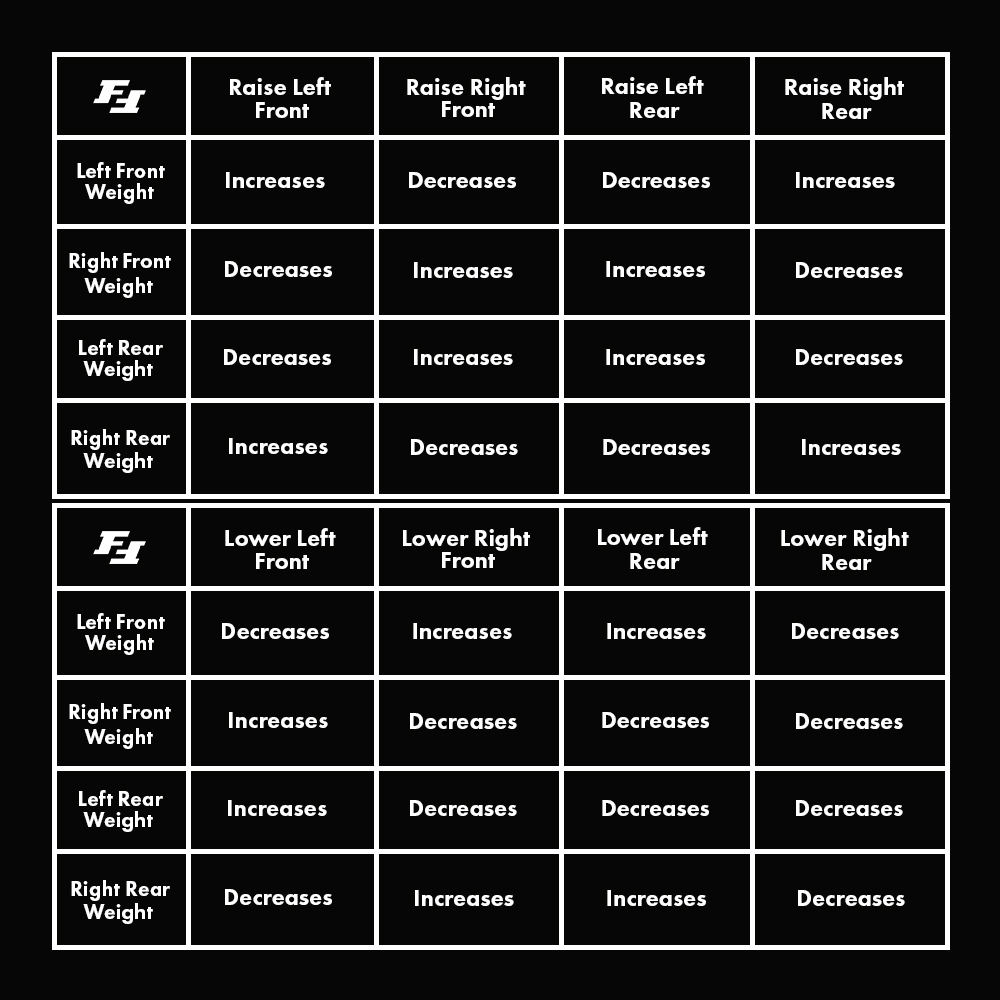– CORNER BALANCING –
Moving from an unbalanced setup to a properly corner balanced setup is one of those things that most people can’t appreciate until they’ve experienced it themselves. It’s easy to predict what better brakes feel like, or the feeling of massive power upgrades and new tires. Suspension, however, is too often ignored but can change your car’s handling characteristics from a sloppy mess to a vehicle that darts into corners on demand and with confidence.
HANDLING UPGRADES
Every car enthusiast and gearhead loves the idea of bolt-on upgrades, but too many forget that most upgrades require proper setup after installation in order to extract the most performance possible. Suspension components are one of the greatest examples of this. Once you bolt on a fancy new set of coilover suspension, complete with damping adjustability and stiffer springs, your car will likely handle worse than it did on OE suspension if you don’t set it up properly. Installation is often quick and easy, but it’s often the process of fine tuning the hardware and adjusting it to fit your needs and driving style that takes time and patience.
UNEVEN CAR CROSSWEIGHT
The only thing enabling the car to change direction and velocity when you use the steering wheel and pedals are the four points where it touches the road: the tires. The effectiveness of the tires at any point is largely determined by the weight balance of the car. Picture a wobbly chair or table, a minor difference in leg height results in some legs doing all of the support work while others sit idly above the ground. On any car, weight that presses down on a corner improves the grip of that tire. In turn, if one end of the car is lighter than the other, those tires on the light end will have less traction. A properly set up performance suspension system helps optimize how and where the vehicle weight is transferred, to increase traction to whatever tire needs it most.
COILOVER ADJUSTMENT
In many cases, a car that sits on a new set of coilovers that haven’t been set up yet will sit heavily on one corner, or on two opposite corners. For example, if the front left and right rear corners are heavier than the other corners, you’ll experience to a lesser effect the teetering that an unbalanced chair or table does. If the front left and right rear are sitting heavy, you might find that the car feels more responsive turning right than it does left. But once you’ve started turning right, the car is more prone to oversteer because of the lighter weight left rear corner. The car could also feel sluggish when starting a left turn, but more controllable after the turn is initiated.
All too often, car owners skip the essential step of corner balancing their vehicle but wonder why the handling got worse after installing a new set of coilover suspension. The process is actually not too difficult, but it does require the proper tools and know-how to do it right.
SETTING UP NEW SUSPENSION
When setting up a new set of coilovers, there are actually a few elements to pay mind to: alignment, spring preload, ride height, and corner weights. There are other related items that come into play when you’re getting serious about car setup, like fine tuning the damping characteristics and making sway bar adjustments. But the former list comprises the essential items when first setting up your car. Spring preload should be set before the coilovers go on the car, then position the spring perches to roughly where you want the car ride height to sit, set your wheel alignments, and then finally corner balance the car. Keep in mind that each of these steps will have a mild effect on the other suspension settings, so you’ll likely need to go back and forth to check that your settings are where you want them. For example, raising or lowering a corner of the car can increase or decrease that wheel’s camber.
HOW TO CORNER BALANCE YOUR CAR
The toughest pill to swallow when corner balancing a car is the hardware that is needed, primarily a set of scales. Popular motorsports equipment companies like Intercomp Racing and Longacre Racing Products offer some of the best and most approachable scale systems in the market today. Most scales brand new will set you back from about $1,200 up to $3,000, depending on the features you’re looking for. If you’re good at searching the used market, these can be found for half the price. You’ll also want to make sure that you’re setting up the scales on a level surface, or at the very least raising and lowering the individual corners so that the car sits perfectly flat. On top of that, ramps to roll the car on and off will help make the job significantly easier.
Before rolling the car onto the scales, inflate the tires to a working pressure. This will be either the factory recommended pressure if it’s a street car on the OE size, or to your target hot tire pressure if it’s your track car or race car. Fill the car with the amount of fuel you want for setting the weight, most people just use a half tank. Then either have the driver sit in the car, or place an equivalent amount of weight in the driver’s seat. Skipping any of these steps will make a noticeable difference.
DETERMINE CROSSWEIGHT
Roll the car onto the scales, and you can then get a view of each corner’s weight. On top of that, most scales will provide you with a front/rear weight bias, and the vehicle crossweight. The crossweight is calculated as the combined right front and left rear weights added together, then divided by the total vehicle weight. This displays the right/left balance of the vehicle, which means for most any car that turns both directions the ideal number is an exact 50 percent. You’ll spend hours chasing perfection, so in most cases getting within a half-percent of an exact 50 will still be very good for most drivers.
You’d be very lucky to get the perfect balance on your first try, so next is to raise the car and make adjustments. At this point, you’ll need to lift the car off the ground at whatever side you’re working on, and turn the spring perch or shock height adjuster to raise or lower that corner. Remember the chair leg analogy? If you raise a leg away from the ground, that leg is then pressing less weight to the ground, but in turn changes the weight on the other three legs. So if you need to increase the weight on the right rear corner of your car, you raise that corner on the suspension. This will in turn increase the weight on the opposite corner (left front) to a lesser extent, while reducing the weight on the adjacent corners (left rear and right front). Refer to the chart below for a guide to how raising and lowering the corners affects their respective weights.
ALIGNMENT TECH TIP
Each change you make will only require a couple turns on the shocks or spring perches at a time to see a difference reflected on the scale. And every time you make a change, rock the car back and forth to help the suspension settle back into place. Also roll the car back and forth a few times to help further. Skipping this step will change the results and send you chasing problems endlessly. It’s also a good practice to note how much each change affected the weights, in order to give you a reference to more quickly make changes in the future.
THE BEST SUSPENSION SETUP
Finding the best setup for your car and your driving style takes time and patience. Like with anything else, make small changes at a time, and record the effects of each one. Improvements in your suspension setup are among the most difficult to feel from your seat. But the more time you spend on it and the harder you push your car, the more you’ll discover about the performance benefits and where you might want to improve your car’s handling even further.
